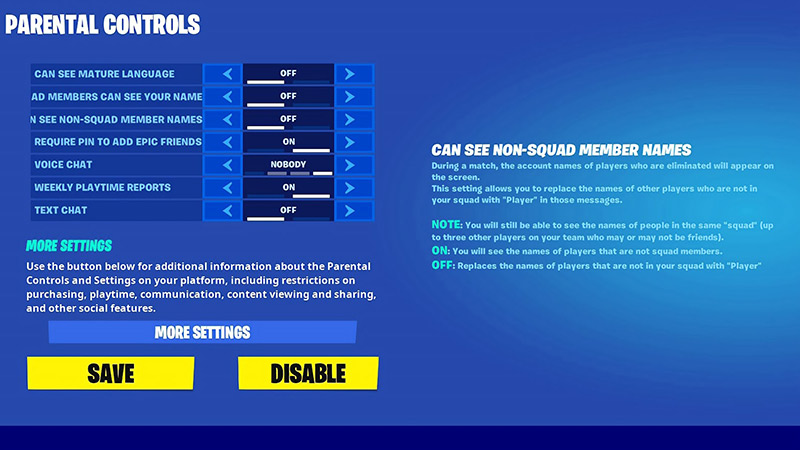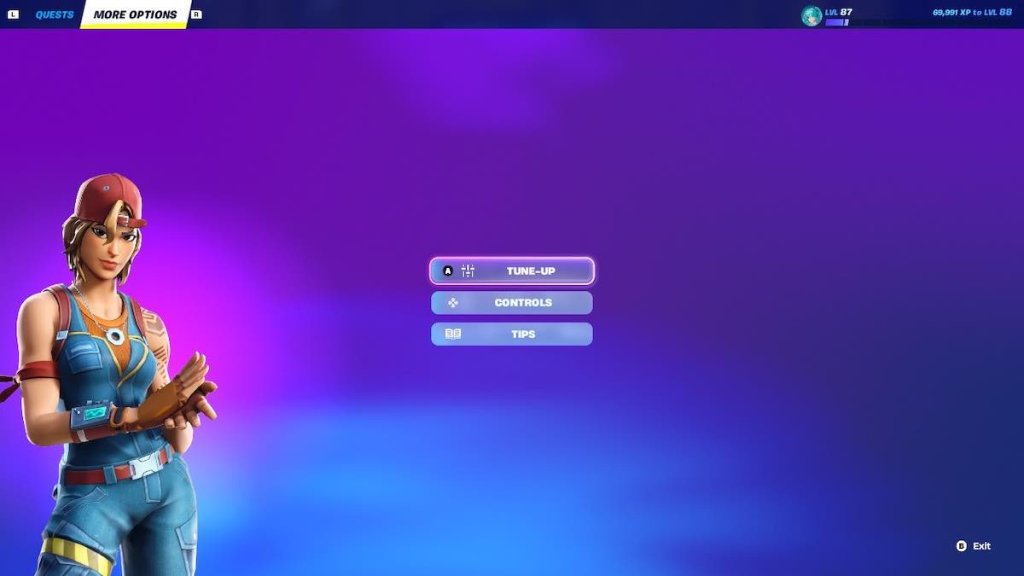
Fortnite Rule 34, Explained
Fortnite’s release was bombastic when it came out, with hundreds of thousands of players downloading and playing the game for hours on end. And as with all highly popular games, certain “rules” begin to appear, such as Fortnite Rule 34. If you’ve been around the Internet for long, you’re probably familiar with the term ‘Rule 34’ but if not, you’re likely wondering “What is Fortnite Rule 34?”. We’re here to clear that up!

What Is Fortnite Rule 34?
The simplest definition of what Rule 34 means, in general, is the following:
- If it exists, there is porn of it – no exceptions.
Essentially, when something (or someone) reaches a certain level of popularity, fans of NSFW art will make nudity of it. There are dozens of highly popular Fortnite skins in the game so naturally, there are hundreds, if not thousands of artworks showing these characters or skins in lewd situations.
It must be said that Epic Games nor Fortnite sanction these ‘rules’; they are a type of free-form art that is often posted on online forums specializing in such art. And it isn’t just Fortnite too; lots of child-friendly content has been turned into 18+ content. The good news is that Fortnite Rule 34 (and other rules) are kept separate from the primary player base. You’ll only find it if you look hard enough.
A rule of thumb (pun intended) regarding Rule 34 and similar ‘Rules’ is that it’s usually something NSFW-related, but not always. Here’s a full breakdown of ‘Fortnite Rules’ (again, not official rules or anything) to help you understand the jargon a bit more.
All Fortnite Rules Explained
That’s the answer to what is Fortnite Rule 34, but there’s more out there. Here’s a quick scan of the unwritten rules of Fortnite (and the Internet, since most of the rules are not specific to just Fortnite):
- Rule 3: You’ll be in the same match, but teammates don’t have to play with you. Essentially, your squad mates can abandon you to play their own game. You’re not promised a res.
- Rule 12: The Fortnite Rule 12 states that ‘anything a player says can (and will) be used against them’. If your child is talking in-game with other players, they need to watch what they’re saying.
- Rule 13: This rule states ‘anything a player says can (and will) be turned into something else’. If your child says something that can be twisted, there’s every chance that it will be.
- Rule 20: Rule 20 states that nothing is to be taken seriously.
- Rule 23: Fortnite Rule 23 refers to in-game parties, and it states that the majority of the party must agree on any action taken. This isn’t necessarily a worrying rule, as it primarily concerns in-game tactics.
- Rule 24: Rule 24 says that any piece of original content is original for just a few seconds before it is copied and turned into a copypasta.
- Rule 30: This rule states that ‘girls don’t play online’. Even today, many toxic male gamers are resistant to the fact that many females play competitive video games.
- Rule 31: In gentlemanly terms, this rule means “Present Thy Bosom, Else Leave The Premises Of My Being – The Decision Is Yours Fair Maiden“
- Rule 32: This rule can be defined as ‘pics or it didn’t happen’, an old internet trend that essentially demands evidence to back up any claims. This is a troubling rule as it can lead to your child sharing images and videoes online.
- Rule 33: ‘Lurking’ means ‘quietly observing’. With that out of the way, this rule states that you should lurk more, as it’s never enough.
- Rule 35: This is a rule that exists outside of Fortnite, and it essentially means that ‘if Rule 34 doesn’t yet apply, it will at some point’.
- Rule 36: Fortnite Rule 36 means that no matter how bad it gets, it can always get worse. So don’t dwell on early losses too much – you may get disconnected during the drop!
- Rule 44: Fortnite Rule 44 states that ‘if it exists, there is a version of it in your fandom’. And possibly a wiki and a tabletop version of it.
- Rule 64: This rule states that ‘if something exists, there is lore of it’.
- Rule 69: This rule is simple, and it states that players should respond with the term ‘nice’, either written or spoken, when the number ’69’ appears in-game. This is a somewhat immature reference to the connection between the innocent integer and the sexual act.
The Good News Is…
That’s the education piece over, and hopefully, we’ve cleared up the meaning of Fortnite Rule 34. If you are looking out for younger players, there are still plenty of ways to keep them safe. Younger fans can engage with Fortnite without ever stumbling on content like Fortnite Rule 34.
In this section, we’ll detail an end-to-end guide to keeping your child safe when playing Fortnite online with other people. Like using the best Fortnite settings for safety, not just for performance.

Fortnite has Parental Controls to help keep your kids safe, as well as regular Settings that can come into play. Fortnite’s Parental Controls are in the Game Settings and online on Epic’s website as well.
For In-Game safety, you will need a PIN instead of a password to get into these settings. Don’t worry if you forget your PIN going through your child’s Fortnite account; it will send you to the correct link needed to reset it.
Read also: All Fortnite Seasons to Date
In-Game Settings
Let’s look at the In-Game Settings first. These won’t touch on Fortnite Rule 34, that’s purely a fan thing. But if you want to make sure everyone’s safe in the game, there are some settings to look at.
After you have entered your correct PIN you will see the below – an example of my own child’s settings:

Going over each option will explain the right of what each control option does. Make sure you push Save before leaving this section. Also, the “More Settings” will take you to Epic’s online Parental Controls webpage.
Before we head over to the site, look here for more ways to control Voice Chat and other ways to protect your kids.

This is the Social Page in the Main settings. Above is another example of my child’s control settings, set so that they are Completely Off-Grid. No one can message them or contact them in any way.
The arrows in grey are what the child CAN NOT change without a parent’s approval. Like before, with the In-Game settings for Parental Control options, on the right of the page, it will give you information for each available option.
Make sure you press Apply at the bottom right of the page before you flip to another page or it will not save.
Now, just in case, since it’s happened to me. In Creative Game Play, the other players’ voices can sometimes come through the settings. To solve that issue, I do this to every account my children use: Voice chat to 0

Now they cannot hear any other players, no matter what. They can’t talk to them either because their headphones do not have a MIC.
Epic’s Online Site
Below is the rating scale you can control and also one of the first options when you enter the Epic’s Parental Controls site.

Friend Requests
This setting requires your Parental Controls PIN to be entered for your child to be able to send or accept Epic Friend Requests. Having to enter a PIN every time can get annoying, but it’s better than your children talking to people you don’t know and something happening.
Setting On
- Each time your child tries to send or accept an Epic Games friend request, you will need to enter your PIN.
- If a game or service doesn’t yet support this setting, friend requests WON’T BE PERMITTED.
- This setting doesn’t affect platform-wide friends systems on gaming platforms such as PlayStation®, Steam, Xbox, and Nintendo Switch™
Setting Off
- Your child CAN send or accept friend requests themselves.
- This is not restricted. They are open to anyone in the world.
Epic Text and Voice Chat Permission
The voice and text chat options are the same, so grouping them keeps you from having to read the same thing twice:
Everybody
- Able to talk and message who they want, but it’s also the least restricting.
Friends & Teammates
- Only message and talk with people from Friends List or people on the Current Team, which will change to new people for every game.
Friends Only
- Only able to message and talk to people who are on their Fortnite and Console friends lists.
Nobody
- All contact is cut off.
- If available, there is a list of Safe Phrases for in-game that can be used.
If your choice is not available in the game, don’t worry, it will automatically choose the most Restrictive option they have.
If you do decide to leave text chat on, don’t worry, there is also a setting for Mature Language in chat. Should make sure any discussions getting close to Fortnite Rule 34 topics will be avoided. They will replace it with Hearts instead of words. Which I guess will make your children think everyone loves them:
Example: “YOU ❤?❤?❤”
Limit Game Time Play
The Player Report
When selected, this report will come to your email once a week. It’s very straightforward. This way, you can see how long they are playing the game.

These permissions help you to manage your child’s online social interactions. They can be applied to games owned and operated by Epic, including Fortnite, Rocket League, and Fall Guys.
Using the above settings to your advantage, as well as your console settings, you can literally make a shield around your children while they play. Keeping them safe from predators, Fortnite Rule 34, and from possibly being banned for saying something they shouldn’t.
Below are the links to parental controls for all of the platforms to add extra protection to your children outside of Fortnite:
PC Platform
Game System Platforms
Humans are curious by nature. Children will look for things, and they are not as innocent as you might think. Now that you know what is Fortnite Rule 34, you should have a better idea about what to steer them away from! With Lego Fortnite and other modes, a wider audience than ever is playing. So it’s great there are tools to keep everyone safe.
Remember, you and only you are responsible for what your child sees and or hears when playing or being online for any reason.
They did not acquire the console, PC, or phone independently. Every parent is responsible for teaching and protecting their children. Including, but not limited to, doing your own research and playing the games they want before they do.
The best way to protect your children in Fortnite or any social setting with R34 starts with you and what you allow them to play, see, and hear.
(Screenshots Credit: Epic Games)
Related Content: Best Fortnite Players












